Search
Remove Ads
Advertisement
Summary 
Loading AI-generated summary based on World History Encyclopedia articles ...
Search Results

Video
The Epic of Gilgamesh, Lecture by Andrew George
Andrew George, Professor of Babylonian, School of Oriental and African Studies (SOAS), University of London The Epic of Gilgamesh is a 4,000-year-old Mesopotamian poem about a hero who embarks on an arduous quest to find the secret of...

Definition
George II of Great Britain
George II of Great Britain (r. 1727-1760) was the second of the Hanoverian monarchs, and like his father George I of Great Britain (r. 1714-1727), he faced a Jacobite rebellion to restore the Stuart line. Wars in Europe and beyond drained...
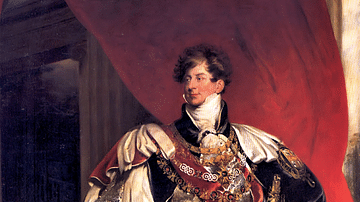
Definition
George IV of Great Britain
George IV of Great Britain (r. 1820-1830) was the fourth of the Hanoverian monarchs. He first reigned as Prince Regent from 1811 for his mad father George III of Great Britain (r. 1760-1820). George IV was an unpopular monarch for his many...
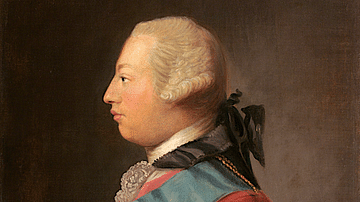
Definition
George III of Great Britain
George III of Great Britain (r. 1760-1820) was the third of the Hanoverian monarchs, and he remains the longest-reigning king in British history. His six decades on the throne saw the creation of the United Kingdom, the loss of the 13 American...
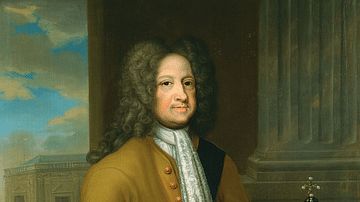
Definition
George I of Great Britain
George I of Great Britain (r. 1714-1727) succeeded the last of the Stuart monarchs, Queen Anne of Great Britain (r. 1702-1714) because he was Anne's nearest Protestant relative. The House of Hanover secured its position as the new ruling...
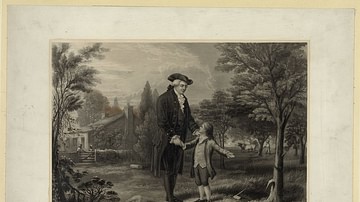
Article
Youth of George Washington
The youth of George Washington (1732-1799), the first President of the United States, remains the least understood chapter of his life, shrouded in folklore and myths. Yet the experiences of his youth, and the bond he felt toward his older...
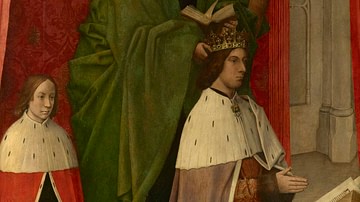
Image
James III of Scotland with St. Andrew
A c. 1480 painted panel from an altarpiece by Hugo van der Goes showing Saint Andrew presenting James III of Scotland (r. 1460-1488). On the left is James' son, future James IV of Scotland (r. 1488-1513). National Gallery of Scotland, Edinburgh...
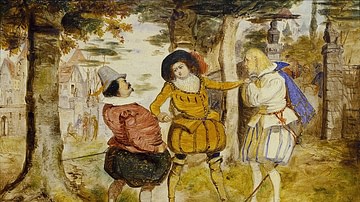
Image
Sir Toby Coming to the Assistance of Sir Andrew Aguecheek
In Act IV Scene I of William Shakespeare's comedy Twelfth Night, Sir Toby Belch rushes to the assistance of Sir Andrew Aguecheek, who is being beaten bloody by Sebastian. Oil on panel by Arthur Boyd Houghton, c. 1854. Folger Shakespeare...

Definition
Twelfth Night - Shakespeare's Most Festive Play
Twelfth Night, or What You Will is a romantic comedy by William Shakespeare (l. c. 1564-1616), written between 1600 and 1601 and first performed on 2 February 1602. As suggested by the title's allusion to Twelfth Night – the night before...
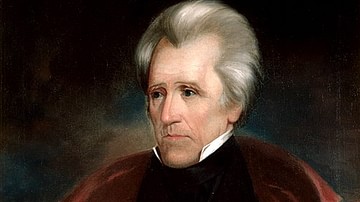
Image
Andrew Jackson
Andrew Jackson as the seventh president of the United States (1829-37), oil on canvas portrait by Ralph Eleaser Whiteside Earl, 1835.
White House Collection, Washington, D.C.